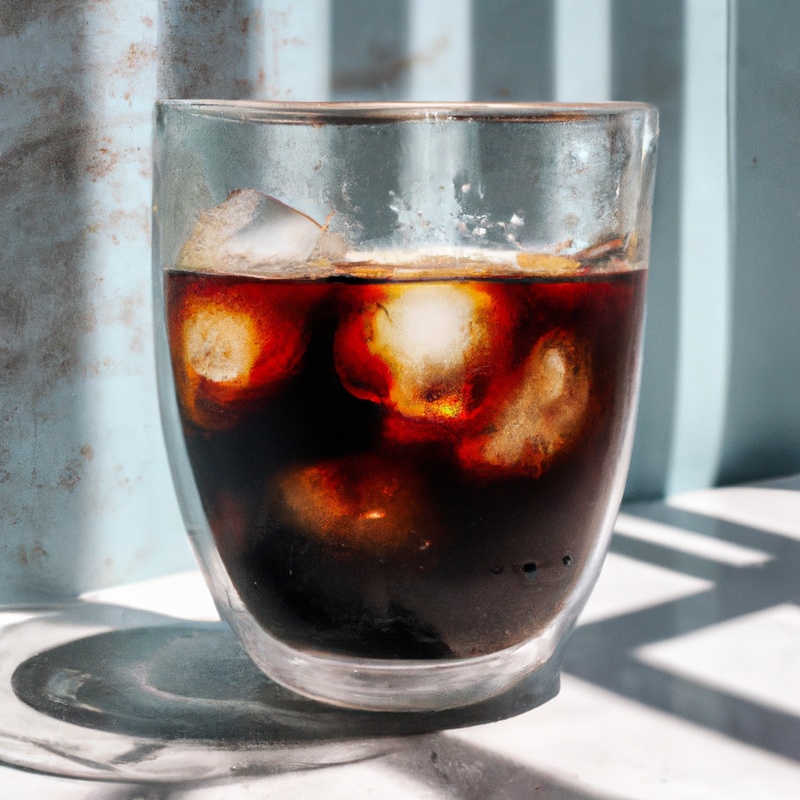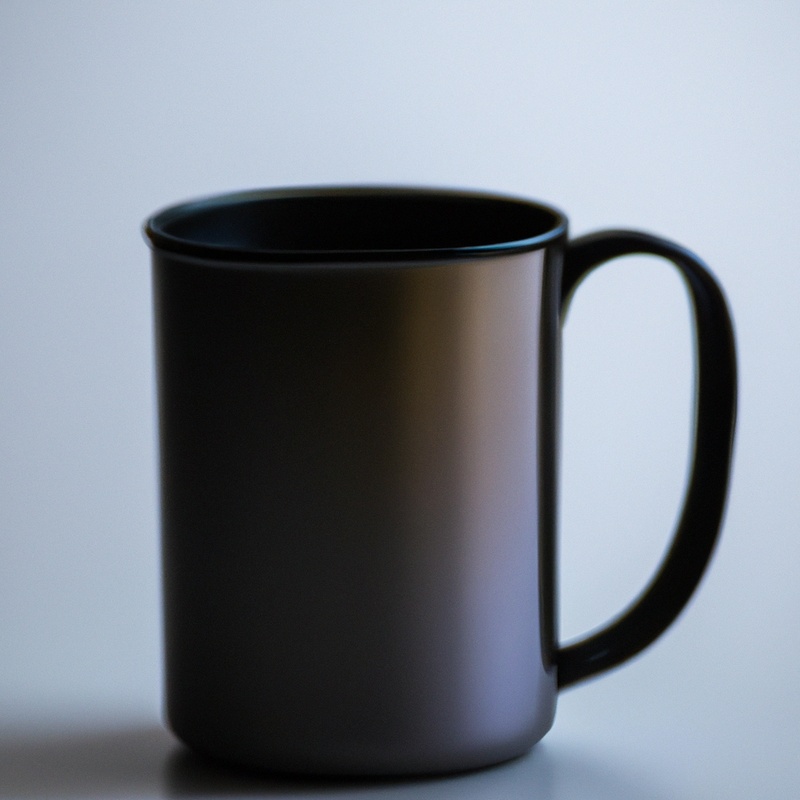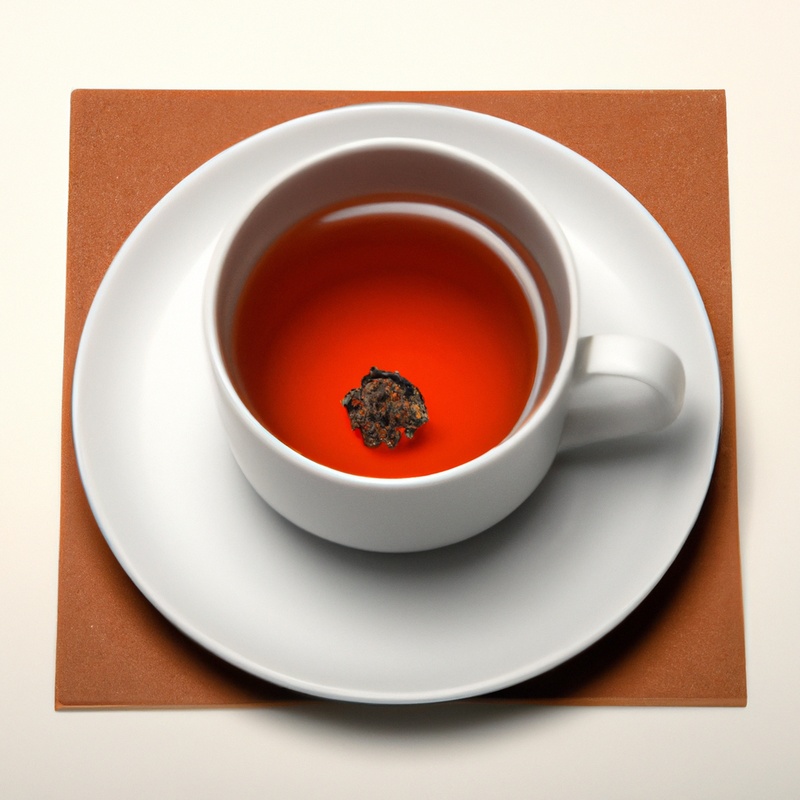Key Takeaways:
- Cold brew coffee is typically stronger than iced coffee due to its longer steeping time and higher coffee-to-water ratio.
- The slow steeping process of cold brew extracts more caffeine and flavors from the coffee beans, resulting in a bolder taste.
- Iced coffee is made by brewing coffee normally and then cooling it down with ice, resulting in a milder taste compared to cold brew.
- If you’re looking for a stronger and more intense coffee experience, cold brew is the way to go.
Are you a coffee lover in search of the perfect summer brew? Well, look no further! In this article, we’ll dive into the world of cold brew and iced coffee to answer the burning question: is cold brew stronger than iced coffee?
We’ll explore the definitions of both beverages, their respective brewing processes, and the benefits they offer.
But the main focus will be on the strength factor. What exactly constitutes strength in coffee?
And how does it differ between cold brew and iced coffee?
Get ready for a caffeine-fueled showdown as we compare these two popular beverages and uncover the truth. So sit back, grab your favorite mug, and let’s jump right in!
| Comparison | Cold Brew | Iced Coffee |
|---|---|---|
| Caffeine Content | Higher | Lower |
| Preparation | Steeping grounds in cold water for 12-24 hours | Brewing hot coffee and immediately pouring it over ice |
| Taste | Smooth and less acidic | May have a slight bitterness |
| Strength | Stronger | Weaker |
| Serving | Served chilled or over ice | Poured over ice cubes or blended with ice |
What is Cold Brew?
In simple terms, cold brew is a type of coffee that is made by steeping coarse coffee grounds in cold water for an extended period of time.
Definition of Cold Brew
Cold brew is a method of making coffee where ground coffee beans are steeped in cold water for an extended period, typically 12 to 24 hours.
This slow extraction process creates a smooth, less acidic coffee concentrate.
Cold brew is served over ice and can be diluted with water or milk if desired.
The result is a refreshing, full-bodied coffee with a naturally sweeter taste.
It’s important to note that cold brew is not the same as regular iced coffee, which is made by simply pouring hot brewed coffee over ice.
How Cold Brew is Made
To make cold brew, you’ll need coarsely ground coffee and cold water.
Start by combining the coffee and water in a large container or jar.
Give it a good stir, then cover and let it sit at room temperature for around 12 to 24 hours.
After the steeping time is up, strain the mixture using a fine-mesh sieve or cheesecloth to remove the coffee grounds.
Finally, serve the cold brew over ice and enjoy its smooth, flavorful taste.
It’s that simple!

Benefits of Cold Brew
The benefits of cold brew are quite significant.
First and foremost, it has a much smoother and less acidic taste compared to traditionally brewed coffee.
This makes it easier on the stomach and less likely to cause heartburn.
Secondly, cold brew contains more caffeine than iced coffee, providing a stronger energy boost.
Lastly, because it is brewed with cold water over a longer period of time, it retains more antioxidants, which are beneficial for overall health.
All in all, cold brew is a refreshing and healthier alternative to regular coffee.
What is Iced Coffee?
Iced coffee is a refreshing beverage made by cooling brewed coffee and serving it over ice, perfect for hot summer days.
Definition of Iced Coffee
Iced coffee is a refreshing beverage made by brewing coffee using hot water and then cooling it down. It is served over ice, giving it a chilled and energizing taste.
It can be enjoyed plain or customized with various flavors, sweeteners, or milk.
Iced coffee is a popular choice for those who prefer a cold alternative to hot coffee, especially during warm weather. It offers a great way to get your caffeine fix while staying cool and refreshed.
How Iced Coffee is Made
Iced coffee is made by simply cooling down hot brewed coffee and serving it over ice.
The process typically involves brewing a regular pot of coffee using hot water, and then allowing it to cool.
Once cooled, the coffee is then poured over a glass filled with ice, and often mixed with milk, sweeteners, or other flavorings.
Some variations include brewing coffee directly over ice to create a stronger flavor, or blending the coffee with ice and milk for a frosty texture.
Remember to add your own flair and enjoy your homemade iced coffee!
Benefits of Iced Coffee
Iced coffee offers several benefits that make it a popular choice for coffee lovers.
- Refreshing: The cold and icy nature of this beverage makes it perfect for hot summer days or when you need a pick-me-up.
- Customizable: You can personalize your iced coffee with various flavors, syrups, or sweeteners to suit your taste preferences.
- Convenience: Iced coffee can be easily prepared at home or ordered from your favorite coffee shop, making it a convenient choice.
- Less acidity: The cold brewing process used to make iced coffee results in a smoother and less acidic taste compared to hot brewed coffee.
- Healthier option: If you prefer your coffee with milk, iced coffee allows you to use lower-fat milk options or milk alternatives to reduce calorie intake.
- Longer shelf life: Iced coffee can be stored in the refrigerator for longer periods without compromising its taste or quality.
- Energy boost: Like hot coffee, iced coffee contains caffeine, which can provide you with an energy boost to start your day or overcome the afternoon slump.

Cold Brew vs. Iced Coffee: The Strength Factor
Cold brew and iced coffee differ in strength, and understanding this factor will help you make the right choice based on your preference and caffeine needs.
Understanding Strength in Coffee
Understanding the strength of coffee is all about the caffeine content. The strength of a coffee depends on factors like the brewing method, the type of beans used, and the ratio of coffee to water.
If you prefer a stronger cup of coffee, opt for darker roasts or brew methods like espresso.
However, keep in mind that strength is subjective and what matters most is finding the flavor profile that you enjoy the most. Experiment with different blends and brewing methods to discover your perfect cup of joe.
Factors Affecting Strength in Coffee
The strength of coffee is influenced by several factors, including the type and roast of the beans, the brewing method, and the coffee-to-water ratio. Darker roasts tend to have a stronger flavor, while the brewing time and temperature can also impact the strength.
Generally, a longer brewing time or using more coffee grounds will result in a stronger cup.
Experimenting with these variables can help you find the perfect strength that suits your taste preferences.

Comparing the Strength of Cold Brew and Iced Coffee
When comparing the strength of cold brew and iced coffee, it’s important to note that cold brew tends to be stronger in terms of caffeine content.
This is because cold brew is brewed with a higher coffee-to-water ratio and steeped for a longer period of time, resulting in a more concentrated and robust flavor.
On the other hand, iced coffee is made by brewing hot coffee and then cooling it down with ice, which can dilute the overall strength.
So, if you’re looking for a stronger caffeine kick, cold brew might be the way to go!
Other Differences between Cold Brew and Iced Coffee
Cold brew and iced coffee differ in flavor profiles, brewing time, and caffeine content.
Flavor Profiles
Flavor profiles play a significant role in distinguishing cold brew and iced coffee.
Cold brew has a smoother, less acidic taste with subtle chocolate undertones, which is a result of the long steeping process.
On the other hand, iced coffee tends to maintain the traditional coffee flavor with its refreshing taste and slight bitterness.
Ultimately, it boils down to personal preference and the kind of flavor experience you desire.
Whether you prefer the rich, mellow notes of cold brew or the familiar taste of iced coffee, it all depends on your taste buds.
Brewing Time
Brewing time is an important factor when comparing cold brew and iced coffee. Cold brew requires a longer brewing time, typically ranging from 12 to 24 hours.
This slow extraction process allows the coffee grounds to steep in cold water, resulting in a smooth and less acidic brew.
On the other hand, iced coffee is usually brewed quickly by pouring hot coffee over ice or cooling it down rapidly. The brewing time for iced coffee is significantly shorter, often taking just a few minutes.
So, if you prefer a stronger, less acidic flavor, the extended brewing time of cold brew might be your go-to choice.
Caffeine Content
Caffeine content is where cold brew and iced coffee differ.
Cold brew generally has a higher caffeine content than iced coffee.
This is because cold brew is steeped in cold water for a longer period of time, allowing for a more thorough extraction of caffeine from the coffee grounds.
However, the actual caffeine content can vary depending on factors such as the type of coffee beans used and the brewing method.
So, if you’re looking for a stronger caffeine kick, cold brew might be the way to go.
Frequently Asked Questions
Is cold brew healthier than iced coffee?
Both cold brew and iced coffee can be enjoyed in moderation as part of a healthy lifestyle. Cold brew is often considered healthier because it tends to have a lower acidity level, which may be gentler on the stomach.
Additionally, the brewing process of cold brew can extract less oil and bitterness from the coffee beans compared to traditional brewing methods.
However, the health benefits can vary depending on personal preferences and choices of ingredients and additives. It’s important to keep in mind that moderation and balance are key when it comes to enjoying any type of coffee.
Can I make cold brew at home?
Yes, you can definitely make cold brew at home! All you need is coarsely ground coffee, cold water, and a container to steep it in. Mix the coffee and water, then let it sit in the fridge for 12-24 hours.
After that, strain out the coffee grounds and your cold brew is ready to enjoy.
It’s a simple and delicious way to enjoy a refreshing coffee beverage without leaving your house. Plus, you can customize the strength and flavor to your liking.
Start brewing and enjoy your homemade cold brew!
Which one is better for hot weather?
If you’re looking for a refreshing beverage to beat the heat, both cold brew and iced coffee can do the job. However, in hot weather, cold brew might be the better option.
Cold brew is made by steeping coffee grounds in cold water for an extended period, resulting in a smooth, less acidic flavor.
Its lower acidity makes it easier on your stomach, reducing the chances of discomfort in the hot weather. Plus, with its bolder taste, cold brew can provide a more satisfying and invigorating experience on those scorching days.
So, for a cool and refreshing pick-me-up on a hot day, go for a delicious cold brew!
Final Verdict
Cold brew and iced coffee are two popular chilled coffee beverages, each with its own unique characteristics.
Cold brew is made by steeping coffee grounds in cold water, resulting in a smooth and mellow flavor profile.
Iced coffee, on the other hand, is brewed with hot water and then chilled.
Both beverages offer their own set of benefits and can be enjoyed in hot weather.
When it comes to strength, cold brew tends to have a higher caffeine content and a smoother taste due to the longer brewing process.
However, the strength can be adjusted depending on the coffee-to-water ratio.
Ultimately, the choice between cold brew and iced coffee comes down to personal preference and desired flavor intensity.
Whether you prefer the boldness of iced coffee or the smoothness of cold brew, both can be enjoyed for their refreshing qualities.
So go ahead, experiment with your brew methods and find the perfect chilled coffee drink that suits your taste buds.
